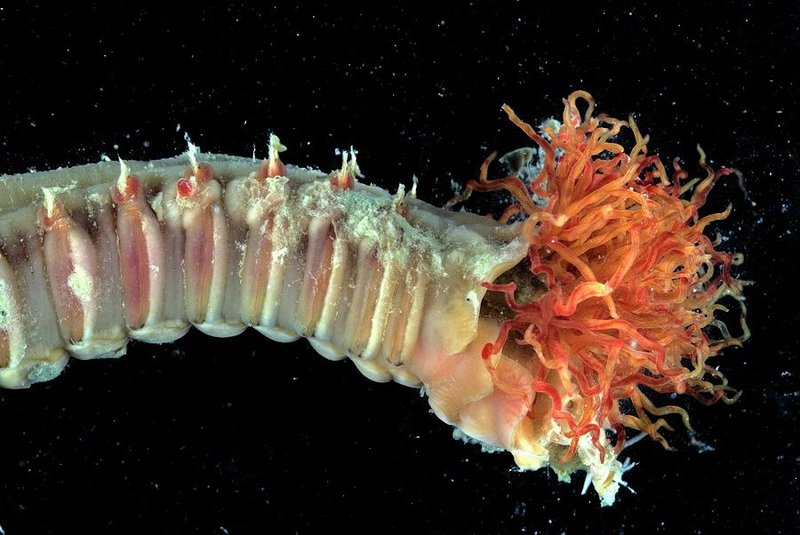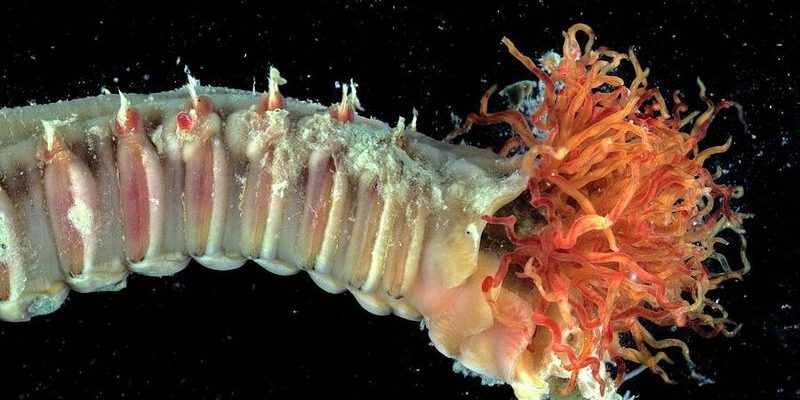
Using remote field cameras to observe polychaetes is like having a front-row seat to a nature documentary, but without the need for scuba gear. These cameras can capture hours of footage in the wild, revealing insights into their activities, interactions, and environments. For example, a popular choice among researchers is the GoPro Hero series. These cameras are compact, water-resistant, and offer high-definition video quality, making them perfect for documenting marine life.
Why Study Polychaetes?
You might be wondering, “Why focus on polychaetes?” Well, studying these worms can tell us a lot about the health of marine ecosystems. They help break down organic materials, clean up waste, and serve as food for a variety of species, including fish and birds. By understanding their behavior, scientists can gauge the overall health of the ocean environment.
Moreover, polychaetes demonstrate fascinating behaviors, from how they build their homes to how they interact with each other. Imagine witnessing some of them construct intricate tubes out of sand or mud right in front of your eyes. Such activities not only provide insights into their survival strategies but also contribute to the broader understanding of marine biodiversity.
In addition, changes in polychaete populations can signal shifts in environmental conditions, such as pollution or climate change effects. By monitoring these worm populations, we can learn more about the changing dynamics of the ocean.
Selecting the Right Field Camera
Choosing the right field camera is crucial when documenting marine polychaetes. You want something that can withstand the salty ocean environment, has excellent battery life, and can capture high-quality images. Here’s a quick look at some popular options:
- GoPro Hero 10: This camera offers stunning 5.3K video and is durable enough for underwater use.
- DJI Pocket 2: A tiny camera with great stabilization and easy-to-use features, perfect for close-up shots.
- Canon PowerShot D30: A powerful option with a rugged design that’s waterproof and shockproof.
Each of these cameras has unique features that make them suitable for different research setups. Depending on your specific needs—whether it’s long battery life, detailed macro shots, or extensive memory capacity—you’ll want to choose accordingly.
Keep in mind that while the camera’s brand is important, how you set it up can make all the difference in capturing those elusive polychaete behaviors.
Setting Up Your Cameras
Once you’ve chosen your camera, it’s time to set it up for capturing polychaete behavior. Start by selecting a location where polychaetes are known to live. These worms favor sandy or muddy substrates, often found in shallow coastal areas.
Once you find the spot, here are the steps to follow:
1. Secure the Camera: Make sure your camera is stable. You can use a tripod or stake it into the ground with a sturdy base to avoid movement from currents.
2. Adjust Settings: Before hitting record, check your settings. Set your camera to capture video at a lower frame rate for longer recording times if needed. Consider using time-lapse mode to capture prolonged activities in a shorter amount of time.
3. Camouflage the Setup: Polychaetes may be skittish, so try to disguise your camera with natural materials. This helps avoid scaring them off.
This setup process is crucial for ensuring that you get the best footage of polychaete behavior. The less disruption, the more natural their actions will be.
Documenting Behavior and Gathering Data
After your camera is set up and rolling, the real fun begins. As you record footage of polychaetes, you can gather valuable data.
Common behaviors to document include:
- Feeding: Polychaetes often feed on small particles in the sediment. Capturing this behavior can show how they interact with their environment.
- Building Tubes: Watching them construct their habitats is not only fascinating but also informative about their ecological role.
- Mating Rituals: Observing courtship behaviors can provide insights into their reproductive strategies.
When reviewing your footage, take notes on the timing and context of these behaviors. Are they more active during certain tides? Do they react differently to environmental changes? Such observations can help you understand the complex lives of these marine worms.
Analyzing Footage for Insights
Once you’ve gathered your footage, the next step is analyzing it. This is where the magic happens. When reviewing your videos, pay close attention to specific behaviors—record how often certain actions occur and under what conditions.
You might want to look for patterns. For instance, if polychaetes seem to feed more actively at certain times of day, that could indicate a connection to their food sources or other environmental factors. This data can be crucial for understanding not just polychaetes, but the health of their entire habitat.
Don’t forget to document your findings! Create detailed notes or even a digital log. This will not only help you with your current research but also serve as a valuable resource for future studies.
Challenges and Troubleshooting
Lastly, it’s worth addressing some common challenges when using field cameras to document marine life. One frequent issue is battery life. Cameras like the GoPro can drain quickly, especially in cooler waters or when using high-definition settings. Always carry extra batteries and a reliable power source.
Another potential hiccup is syncing multiple cameras if you’re using more than one. You’ll want to ensure they’re all recording simultaneously to make comparisons easier. A little pre-planning here pays off.
Finally, if you experience connectivity issues or find your footage is blurry, check your camera settings. Make sure it’s clean and properly calibrated. Sometimes, a simple reset can resolve unexpected issues.
Documenting the behavior of marine polychaetes with field cameras opens up a world of insights about these intriguing creatures. From selecting the perfect camera to analyzing your footage, every step contributes to a better understanding of marine ecosystems. Polychaetes might be small, but their impact is significant, serving as ecological indicators and fascinating subjects of study.
So, next time you’re near the ocean, consider taking a peek beneath the surface. With the right tools and a little patience, you might uncover behaviors that have never been seen before, all thanks to the wonders of modern technology.

